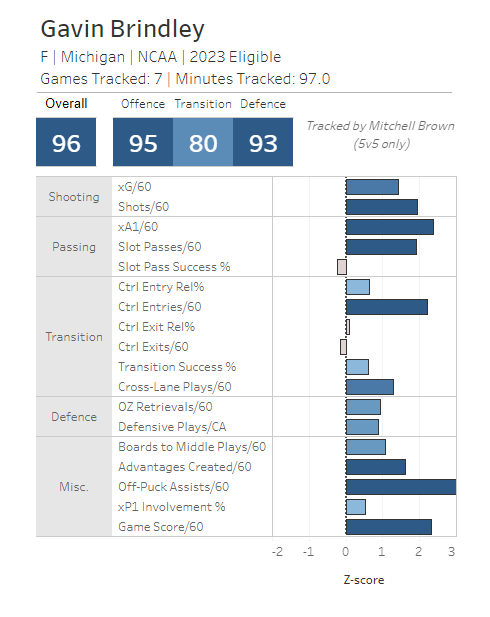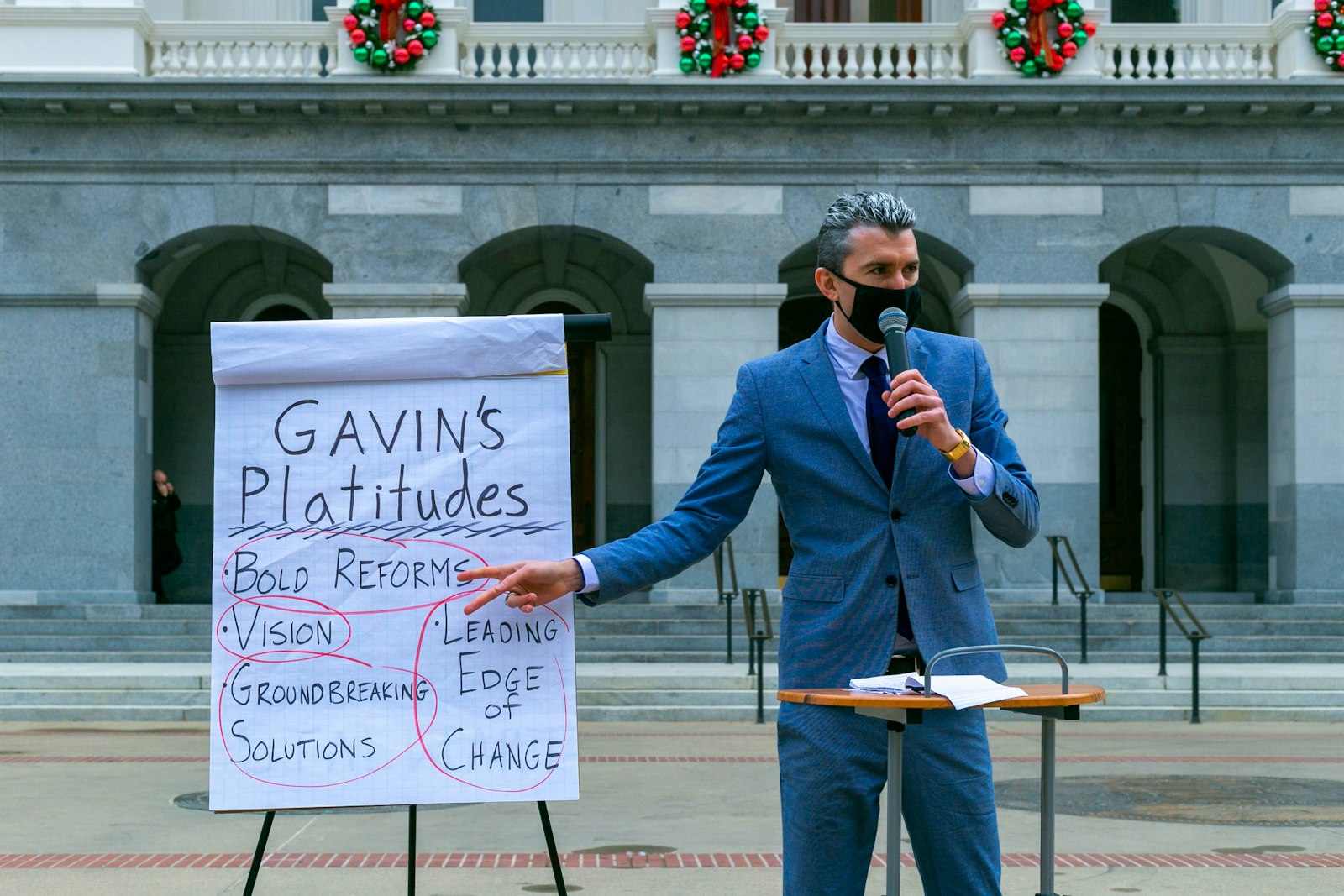Pop quiz time: how many forwards listed at 5'8" or shorter played in at least half of the NHL season (so 41+ games) in 2022/23? I don't actually expect anyone to know this, or look it up, so the answer is 5. Here is the full list, sorted in descending order of point totals.
- Mats Zuccarello
- Alex DeBrincat
- Cole Caufield
- Tyler Johnson
- Kailer Yamamoto
If you're thinking that isn't a lot, it's because it isn't. On the other hand, there was 39 forwards who are listed as 6'4" or taller who played in 40+ games. There are almost as many of them who were a point per game (4) as there were total forwards who are 5'8" or shorter – and none of those had a point per game.
Now, I'm saying this to make a very general point that being much smaller in the NHL is more difficult than being bigger. There are definitely hurdles for them that taller players do not have to deal with. Mind you, there are also some hurdles to being too tall, which is why even those 6'4" taller forwards are dwarfed (heh) by the hundreds of forwards who are listed between 5'9" and 6'3". Basically, it's good to be average!
But I'm not someone who thinks a smaller player should be completely discounted as a prospect just because of their height. In fact, smaller players already are the ones who drop on draft day relative to their rankings. On the other side of the height chart, taller players are more likely to be drafted above their draft positions come draft day. So it's not like I'm saying smaller players are overvalued, in fact I think it may still be of the opposite.
To me, this just means that you need to be mindful of the specific smaller player before you pick one. Nick Robertson was a damn good prospect. He's a bulldog, a good skater, and has a hell of a shot. He scored like gangbusters in junior, then again in the AHL as a pro. But that last jump to the NHL is very difficult. There are a particular set of skills – current and projectable – that is important to look for when you're much smaller than the average NHLer.
So let's talk about Gavin Brindley, and if he checks those boxes.
THE BASICS: STATS AND CONTEXT
- Position: Right wing
- League(s): NCAA
- Height: 5'8"
- Weight: 168 lbs
- Birthdate: October 5th, 2004
Here are his draft rankings, as of writing this:
- Bob McKenzie: 43rd
- Scott Wheeler: 24th
- Elite Prospects: 21st
- Dobber Prospects: 13th
- Smaht Scouting: 9th
- Future Considerations: 14th

Brindley is one of the rare prospects to play in the NCAA in his draft year, and typically any prospect who does are top prospects – very likely a first rounder. In fact, with 38 points in 41 games as a 17 year old. He played on the powerhouse Michigan team, which was up there with the likes of Minnesota (Matt Knies' team) as one of the best teams and programs in the NCAA, in their toughest conference. And Brindley didn't just hold his own, he excelled. His points reflect his dominance, as do his tracking stats and the good old fashioned eye test. He played in a top six role on Michigan's "kid line" featuring Adam Fantilli – another top prospect in this year's draft – and Rutger McGroarty, taken in the first round in last year's draft.
Brindley also got to play for Team USA at the World Juniors, which is another not very common achievement as a draft year player in an U20 tournament. He had 4 points in 7 games. He played mostly an "energy" role in their bottom six, and he still managed to put up four points. That's part of the reason why I like him so much as a prospect, but we'll get into that below.
As Brindley worked hard and improved, he was given more and more responsibility by his coach. He wound up earning a spot on their top line, on Adam Fantilli's wing – two freshmen playing the top line is no mean feat. He also earned more powerplay time, though only 1 of his 12 goals and 9 of his 38 points came on the man advantage. He also had a huge second half of the season to reward his coach for giving him the bigger role:
- 1st half = 21 games, 1 goal, 10 points, 16 PIM, 2.62 shots per game, and -2
- 2nd half = 20 games, 11 goals, 28 points, 6 PIM, 3.60 shots per game, and +23
Not only did he basically triple his point production, but he cut way down on the penalties he took, and increased his shot rate. His coach gave rave reviews for Brindley through the season, and it's easy for me to see why.
Let's talk about why we like him so much.
THE GOOD: EXTREMELY HARD WORKING AND SMART
My quick summary of Brindley is that he is a "little things king". He simply does a lot of the small, less noticeable things right most of the time. He also works extremely hard on the ice and 'plays with a lot of pace' as the scouts would say – to me, that means a combination of he's quick and moving all the time, like a waterbug in his case. On top of all of that, he has a lot of hockey smarts. That comes through in the little things he does right: anticipating play, good positioning, having very good defensive impacts as a small 17 year old in the toughest conference in the NCAA.
Honestly, some of his work ethic, attention to detail and defensive impact may because he played as a defenseman until he was 13 years old. Since he's always been a smaller player, that may be why he a) looks and acts like a defenseman sometimes, and b) has learned how to physically battle as a smaller guy. Here are some examples of both his defense and physical play – he's either #4 when on Michigan, or #5 when on Team USA.
Now all of that may make it sound like Brindley is not as much of a skilled player, but he definitely has plenty of it. His work ethic and "hockey IQ" stands out a lot, and both are constantly remarked upon by any scouting report you will read or listen to. To me, I think the two also help his skill play up to a higher level than it would otherwise. Having good hands, a good shot, good passing, and so on is all well and good, but learning how to use those skills to be as effective as possible takes more than just raw skill and speed. Here are some examples of the skill plays Brindley can make, whether it's carrying the puck, passing it, and so on. He's either wearing #4, or in clips where he's on Team USA he is wearing #5.
The combination of his whole game helps Brindley achieve what I would characterize as a swiss army knife player status. He has very strong skills and abilities across the board. He works hard. He's very smart. He has played as a center and as a winger at Michigan, and earned each promotion up their lineup until he solidified a spot on their top line on Adam Fantilli's wing. He has played on top powerplay units. He has killed penalties. He had the second most blocked shots on the team with 41, behind only one of their top defensive defensemen. He doesn't shy away from physical play and will battle – and win – against bigger, stronger opponents.
Brindley is also a bit of a dual-threat offensively. He can play the role of the quarterback in the offensive zone, carrying the puck to break down the defense and distributing the puck to his teammates for scoring chances. He can play in the dirtier areas of the ice, scoring off of rebounds, picking up loose pucks to keep the possession alive, and deflecting point shots with good hand-eye coordination.B ut he can also play the role of the finisher both because he has a pretty darn good shot – you can see below examples of his wrist shot, curl and drag release, one timer slap shot, and snap shot from his knee. Here are some examples of each – he's wearing #4 in all the clips.
Brindley was a major factor in the Big 10 Conference Championship upset win over Minnesota, producing three assists in their 4-3 win – including on the game tying and game winning goals in the third period. He often seemed to have his best games against the toughest opponents – he was a menace in every game against Minnesota, for example, with 5 points in 2 games.
Whether it was in the NCAA or at the World Juniors as one of the very youngest players in the tournament, Brindley had several "God Shifts" as I call them, where he simply took over. Solo carried the puck into the offensive zone, forechecked hard to outskate the defenders to the puck, checked and knocked down defenders taller and heavier than him, battled for the puck along the boards, cycled it with nifty hands and dekes, got it to the middle of the ice with his passing or his feet, had dangerous shots of his own, set up his teammates with dangerous shots, retrieved loose pucks by simply outskating everyone else, and repeat.
Here are some of my favourite examples where Brindley just took over. In the clips where he's on Michigan, he's wearing #4.
Yes, that's Matthew Knies – 6'3" and 209 lbs – that Brindley outfought and stripped the puck from at 5'8", 168 lb and 2 years younger. In the other clip against Minnesota, Brindley checked and stripped Ryan Johnson, picked 31st overall by Buffalo with 3 years, 3 inches, and 20 lbs on him. In that shift against Harvard, he is dominating against their top line with Sean Farrell, Matt Coronato and Henry Thrun. All of them are now signed to NHL contracts, Coronato was a 13th overall pick. and all of them are at least heavier and 2+ years older than him.
THE FLAWS: MASTER OF NONE?
Honestly, Brindley is another guy where it's really hard to identify any noteworthy flaws without really nitpicking. One thing I've talked about with others is that it can be hard for a prospect who is very balanced and is good across the board in any skill you can think of, but isn't necessarily elite at any of them.
With Brindley that's sort of true, but also not – hence my question mark in the header above. No, he doesn't have the best shot in this draft, nor does he have the best skating, passing, playmaking, defensive impact as a forward, and so on. But the level he already has for everything is not just merely good. In many cases, he is excellent. And like I said above, he is so smart and works so hard that he is simply able to get the most out of his skills to be more effective and impactful on the ice than others who would, in isolation, be considered more "talented".
If there is a potential red flag, it's his size. He was listed as 5'9" for a lot of this season, but was just updated to 5'8" after attending the NHL combine over the weekend. While I do love me a short king who is able to become an NHL star, it is still a rare thing as I mentioned from the very start. Even if he is a really hard worker, so was Nick Robertson. He was fearless and worked harder than maybe anyone, but that only took him so far. Maybe he can figure things out, but that's the struggles a smaller player has to face and the hurdles he has to learn how to clear.
So as good as Brindley is now, it would help him to get even better in as many ways as he can. Get faster, more agile, stronger, improve his shot and his playmaking, get better on defense, improve his transitions, and so on. He'll need all of it and more to really become a star at the NHL level, but I do think that's possible.
OVERALL ASSESSMENT
The thing is, even with the concerns with his size, I don't care. I love Brindley – after digging into him more for this profile and watching his clips and games, he's come to be one of if not my very favourite in this draft. He's just so fun to watch and really improved through the year.
Brindley doesn't have any big flaw otherwise that become exacerbated when you're smaller. He is a very good, fast and agile skater. He is willing to go to the dirty areas and can hold his own physically when he needs to be. He can have an impact on defense because of his background, his intelligence and work ethic. He's got that dog in him, as it were.
And for all the areas where Brindley has an impact on the ice, he has examples of smaller NHLers to prove it is possible. Defensive impact and two way-center abilities? There's Yanni Gourde or Colin Blackwell. Physical resiliency? Brendan Gallagher. Skill and offensive impact? Marchessault, Zuccarelo, Gaudreau, Marchand, Johnson, and Lizotte.
Seeing all this, it may be both surprising and not surprising at all to see that the spread of his rankings is so wide. He just looks and feels like such a fun, exciting and effective player... but he is still 5'8", and players that size often aren't ranked that high and fall on draft day even relative to their rankings – just ask Logan Stankoven.
McKenzie's latest ranking (as of writing this) had him in the middle of the second round, while others have him within their top 10. There are three main reasons for that, in my opinion. First, there's the usual draft bias against a guy who is smaller and born in the September 15 to December 31st window. Second, this is a very deep draft year when it comes to guys who are considered in that tier of a later first round/early second round guy. Third, and perhaps because of the second point, but this year's rankings seem more chaotic than usual. Brindley is not the only one who I've seen have such a big spread in their rankings, depending on who you ask.
For my money, I would definitely not be averse to Toronto taking him with their first round pick straight up. I just love him that much, in fact I dare say he may just be my favourite prospect in this draft even if he isn't the very best. But because of the three points mentioned above, I think Brindley may be the best player to target as a trade down candidate. Every year there's at least one smaller player who seems like a great prospect that falls. Alex DeBrincat, Cole Caufield, Logan Stankoven, and Lane Hutson come to mind. I'm imagining trading down from 28, getting two picks from it and being able to draft Brindley and someone else I like later on. And that thought pleases me greatly.
Thanks for reading!
I put a lot of work into my prospect articles here, both for the draft and Toronto's prospects. I do it as a fun hobby for me, and I'd probably do it in some capacity even if PPP completely ceased to exist. But if you like reading my work, some support would go a long way! I pay for a few streaming services (CHL, some NCAA, some USHL, the occasional TSN options for international tournaments that are broadcast) to be able to reliably watch these prospects in good quality streams. I also pay for some prospect-specific resources, such as tracking data and scouting reports from outlets like Elite Prospects, Future Considerations, McKeen's Hockey, and The Athletic.
Being able to get paid for this helps me dedicate more time and resources to it, rather than to second/third jobs. And whatever money I make here, a lot of I reinvest back into my prospect work through in those streaming and scouting services. Like I said, I'd be doing whatever I can afford for this anyway, so any financial help I get through this is greatly appreciated!







Comment Markdown
Inline Styles
Bold: **Text**
Italics: *Text*
Both: ***Text***
Strikethrough: ~~Text~~
Code: `Text` used as sarcasm font at PPP
Spoiler: !!Text!!